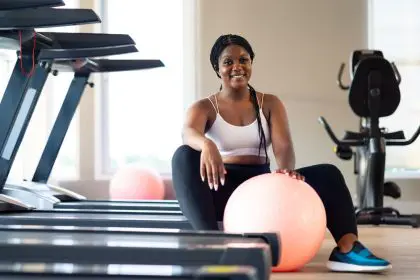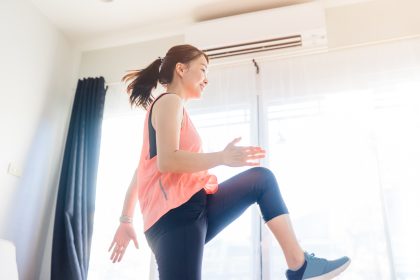The modern gym floor presents fitness enthusiasts with an array of choices for cardio, each promising unique benefits for health and wellness. Among these options, treadmills and StairMasters stand out as popular cardio machines, each offering distinct advantages for different fitness goals. Understanding these differences can help shape a more effective workout routine.
The evolution of cardio equipment
The development of indoor cardio equipment has transformed how we approach fitness. Treadmills, which emerged from industrial origins, have evolved into sophisticated machines that simulate natural running movements. StairMasters, introduced later, brought the intensity of climbing to controlled indoor environments. Both machines have undergone significant technological advances to provide more effective and safer workouts.
The biomechanics of movement
Treadmills create a flat or inclined surface that moves beneath the user, allowing for natural walking or running motions. This movement pattern closely mimics outdoor exercise, making it an intuitive choice for many. The belt’s movement requires users to maintain balance and coordination while engaging multiple muscle groups simultaneously.
StairMasters, however, create a different biomechanical challenge. The rotating steps demand continuous upward movement, engaging muscles in a pattern distinct from regular walking or running. This vertical component introduces unique stress on the lower body, particularly targeting the posterior chain muscles.
Impact on muscle development
The muscular engagement patterns between these machines differ significantly. Treadmill workouts primarily activate the quadriceps, hamstrings, calves, and gluteal muscles in a cyclical pattern. The engagement level varies based on speed and incline settings, allowing users to target specific muscle groups more intensely.
StairMaster workouts create constant resistance against gravity, intensifying lower body muscle activation. The stepping motion particularly emphasizes the quadriceps, calves, and gluteal muscles, while also engaging core stabilizers more consistently than treadmill walking or running.
Cardiovascular adaptation differences
The cardiovascular demands of these machines vary in important ways. Treadmill exercise allows for gradual progression in intensity, making it easier to maintain steady-state cardio for extended periods. The ability to adjust speed and incline provides flexible control over heart rate zones, beneficial for various training goals.
StairMaster workouts typically elevate heart rates more quickly, even at lower speeds. The vertical movement pattern requires more immediate cardiovascular adaptation, often resulting in higher perceived exertion levels at lower speeds compared to treadmill exercise.
Energy expenditure patterns
The caloric burn patterns between these machines reveal interesting differences. Treadmill running typically burns more calories per hour than StairMaster use at similar perceived effort levels. However, StairMaster workouts often create a higher afterburn effect, known as excess post-exercise oxygen consumption (EPOC).
Joint impact considerations
The impact patterns of these machines deserve careful consideration. Treadmills, particularly during running, create repetitive impact forces that can affect joints throughout the lower body. The magnitude of this impact varies with speed and incline settings.
StairMasters generally produce less impact per step, as the movement pattern involves more controlled, vertical loading. This reduced impact makes StairMasters potentially more suitable for individuals with certain joint sensitivities, though the repeated stepping motion creates its own form of stress on knee and hip joints.
Practical application strategies
Understanding how to effectively use each machine enhances workout benefits. For treadmills, varying speed and incline creates diverse training stimuli. Beginning with walking and progressing to running allows for natural adaptation. Interval training on treadmills can include both speed and incline variations, creating comprehensive workouts.
StairMaster training benefits from attention to form and resistance levels. Starting with shorter durations at moderate speeds allows users to maintain proper posture and movement patterns. Progressive overload can involve increasing duration, speed, or incorporating intervals of higher intensity stepping.
Programming considerations
Developing effective workout programs requires understanding each machine’s strengths. Treadmills excel in building endurance and speed, making them ideal for race training or general cardiovascular fitness. The ability to precisely control pace and intensity makes them valuable for structured training programs.
StairMasters provide excellent options for high-intensity interval training and lower-body strengthening. Their unique movement pattern makes them particularly effective for improving lower body power and endurance simultaneously.
Recovery and adaptation
Both machines require different approaches to recovery and progression. Treadmill workouts, especially those involving running, often necessitate more recovery time between intense sessions due to the impact forces involved. StairMaster workouts, while intense, may allow for more frequent training due to lower impact stress.
Looking toward future developments
The evolution of these machines continues with technological advances. Modern treadmills now often include interactive features, virtual racing options, and advanced tracking capabilities. StairMasters have also evolved to include various program options and resistance patterns, enhancing their versatility for different training goals.
The choice between treadmill and StairMaster ultimately depends on individual goals, physical condition, and personal preferences. Both machines offer valuable benefits for cardiovascular health, muscle strengthening, and overall fitness improvement. Understanding their distinct characteristics allows for more informed decisions in creating effective workout routines.
The ongoing development of these machines, combined with our growing understanding of exercise science, continues to expand their potential applications in fitness programs. Whether choosing one machine exclusively or incorporating both into a varied routine, the key lies in consistent, progressive training aligned with individual fitness objectives.

















